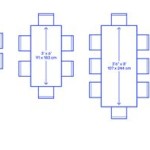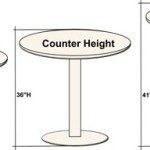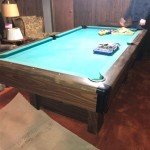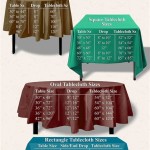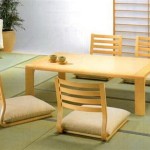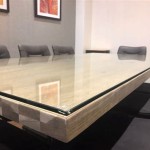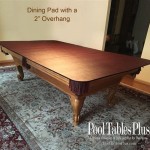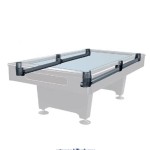DIY Restoration Hardware Coffee Table: A Comprehensive Guide
Creating a coffee table inspired by Restoration Hardware's aesthetic appeals to those seeking a blend of industrial chic and rustic elegance without incurring the high cost associated with the brand. This article provides a detailed process for constructing a DIY Restoration Hardware-style coffee table, covering material selection, construction techniques, and finishing methods to achieve a similar visual appeal and durability.
Material Selection and Preparation
The foundation of any successful DIY project lies in the careful selection and preparation of materials. For a Restoration Hardware-inspired coffee table, the primary materials consist of wood for the tabletop and metal for the base. The choice of wood significantly impacts the final aesthetic. Options include reclaimed wood, solid hardwoods like oak or maple, or more affordable alternatives such as pine or poplar. Reclaimed wood delivers an authentic aged appearance, complete with imperfections and unique character. Solid hardwoods offer superior durability and longevity. Pine and poplar, while more budget-friendly, require careful staining and finishing to mimic the look of more expensive wood species.
The metal base typically utilizes steel or iron. Square or rectangular steel tubing offers a clean, industrial aesthetic, while wrought iron can provide a more decorative, vintage feel. Consider the gauge (thickness) of the metal; thicker gauge metal will result in a sturdier and more robust base. Ensure accurate measurements are taken for both the tabletop and the base to ensure a proper fit and stable construction.
Prior to assembly, the wood requires thorough preparation. This involves sanding the surface to achieve a smooth, even texture. Start with a coarse grit sandpaper (e.g., 80-grit) to remove any imperfections, and gradually transition to finer grits (e.g., 120-grit, 220-grit) for a polished finish. Fill any gaps or imperfections in the wood with wood filler, allowing it to dry completely before sanding. Clean the wood surface to remove any sanding dust before proceeding to the staining or finishing stages.
The metal base requires cleaning and preparation as well. Remove any rust or mill scale using a wire brush or abrasive pad. Wipe the metal surfaces clean with a solvent to remove grease or oil. Depending on the desired finish, the metal can be primed and painted, powder-coated, or left with a bare metal finish and sealed with a clear coat to prevent rust.
Construction Techniques for the Tabletop and Base
The construction process involves assembling the tabletop and fabricating the metal base, followed by connecting the two components. The specific construction methods will vary based on the chosen materials and design. For a solid wood tabletop, consider using joinery techniques such as pocket screws, dowels, or mortise and tenon joints to secure the individual boards together. Pocket screws offer a simple and effective method for joining wood, while dowels and mortise and tenon joints provide greater strength and a more traditional aesthetic. Ensure the joints are properly aligned and secured with wood glue and clamps during the drying process.
If using reclaimed wood, it may be necessary to address any warping or unevenness in the planks. This can be achieved by planing the wood to create a flat and consistent surface. Consider adding breadboard ends to the tabletop. Breadboard ends are perpendicular pieces of wood that run across the ends of the tabletop, helping to prevent warping and adding a decorative detail. They are typically attached using mortise and tenon joints or other methods that allow for wood movement.
Fabricating the metal base requires welding or using metal connectors. Welding offers the strongest and most durable connection, while metal connectors, such as flanges and pipe fittings, provide a simpler alternative for those without welding experience. Accurate cutting and measuring are essential for ensuring a square and level base. Depending on the design, the base may consist of straight legs, a central pedestal, or a combination of different elements. Ensure the base is structurally sound and capable of supporting the weight of the tabletop.
Connecting the tabletop to the metal base can be achieved using screws, bolts, or a combination of both. Predrill pilot holes through the metal base and into the underside of the tabletop to prevent the wood from splitting. Use countersunk screws or bolts to ensure the fasteners are flush with the surface of the metal base. Consider using rubber washers between the metal base and the tabletop to prevent scratching and provide a slight cushion.
Achieving the Restoration Hardware Finish
The finishing process is crucial for replicating the distressed and aged look characteristic of Restoration Hardware furniture. This involves selecting appropriate stains, paints, and sealants, and applying them using techniques that create a weathered appearance.
For the wood tabletop, consider using a stain that mimics the color of reclaimed wood, such as a gray, brown, or weathered oak stain. Apply the stain evenly to the surface of the wood, following the manufacturer's instructions. Allow the stain to dry completely before proceeding to the next step.
To create a distressed look, use techniques such as sanding, scraping, or applying layers of different finishes. Sanding through the stain in certain areas will reveal the natural wood grain underneath, creating a worn appearance. Scraping the surface with a putty knife or other tool will simulate the effects of age and use. Applying layers of different finishes, such as a dark stain followed by a lighter stain, can create depth and dimension.
A clear sealant, such as polyurethane or lacquer, is essential for protecting the wood surface from moisture and wear. Apply several coats of sealant, allowing each coat to dry completely before applying the next. Sand lightly between coats to create a smooth and even finish. Consider using a matte or satin finish sealant to maintain the rustic aesthetic.
For the metal base, consider applying a paint or powder coating that mimics the look of aged iron or steel. A dark gray or black finish is a popular choice. To create a distressed metal finish, use techniques such as dry brushing, applying a patina, or sanding through the paint to reveal the metal underneath. Dry brushing involves applying a small amount of paint to a brush and then wiping off most of the paint before applying it to the surface, creating a subtle, textured effect. A patina can be created by applying a chemical solution to the metal, causing it to oxidize and develop a weathered appearance.
Once the finishing process is complete, the coffee table can be assembled and any necessary adjustments can be made. Inspect the table for any imperfections and make any final touch-ups as needed. Consider adding felt pads to the bottom of the legs to protect floors from scratches.
Proper material selection, meticulous construction, and careful finishing are the keys to creating a DIY Restoration Hardware-inspired coffee table that emulates the style and durability of the original designs. By following these guidelines, individuals can achieve a high-end look without the high-end price tag.
The longevity of the DIY coffee table relies significantly on the quality of materials and the meticulousness of the construction. Opting for durable wood species and robust metal components ensures that the table withstands daily use and maintains its structural integrity over time. Similarly, employing proper joinery techniques, such as mortise and tenon or dowel joints, strengthens the tabletop and prevents warping. Welding the metal base, as opposed to using connectors, creates a more permanent and stable structure.
The finishing process also plays a vital role in the table's durability. Applying multiple coats of a high-quality sealant protects the wood surface from moisture, scratches, and stains. Regularly cleaning and maintaining the coffee table will further extend its lifespan. Avoid using harsh chemicals or abrasive cleaners that can damage the finish. Instead, use a mild soap and water solution to wipe down the surface. Promptly address any spills or stains to prevent them from setting into the wood.
Beyond the practical aspects, consider the aesthetic details that contribute to the overall look of the coffee table. The choice of hardware, such as screws or bolts, can influence the final design. Using decorative fasteners or concealing them altogether can enhance the table's visual appeal. Adding small details, such as metal accents or decorative moldings, can further customize the design and create a unique piece that reflects personal style.
Building a DIY Restoration Hardware coffee table is a challenging but rewarding project. It allows individuals to create a custom piece of furniture that perfectly complements their home decor while saving money. By carefully planning the project, selecting high-quality materials, and employing proper construction and finishing techniques, it is possible to create a coffee table that rivals the look and durability of store-bought furniture. The process fosters a sense of accomplishment and provides a unique and personalized addition to any living space.

Diy Restoration Hardware Coffee Table

The Full Tutorial For Building My Restoration Hardware Coffee Table Dupe Making Pretty Spaces Blog

Diy Restoration Hardware Inspired Coffee Table

Diy Restoration Hardware Trestle Door Coffee Table The Rozy Home

Restoration Hardware Inspired Barade Coffee Table Simplicity In The South

Diy Restoration Hardware Inspired Coffee Table

Diy Parquet X Brace Coffee Table Free Plans Rh Inspired

Barade Coffee Table Ana White

Diy Coffee Table Restoration Hardware Knockoff

Diy Restoration Hardware Inspired Coffee Table

